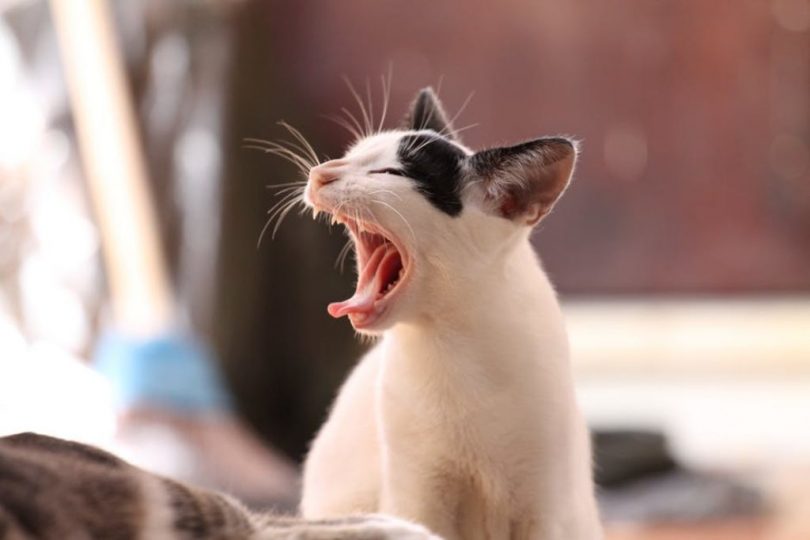Cat Asthma: Triggers, Symptoms, & Treatment
Cat asthma is quite similar to human asthma where an asthma attack is generally characterized by difficulty in air movement in and out of the lungs due to the narrowing of the airways.
Asthma is the most common respiratory infection affecting cats, with female cats being more vulnerable compared to male cats.
The frequency of the cats affected is higher in mixed cat breeds, for example, Siamese, and Himalayan breeds. An average of 800,000 cats suffer from Asthma in the United States of America.
Cat asthma manifests in two types: sudden (acute) and long term (chronic).
It is classified between mild (it does not impede the cats day to day life), to life-threatening (entails a serious oxygen deprivation and immediate medical attention is needed).

Feline Asthma Triggers (Causes)
Cat asthma is caused by an inflammation of the airway due to the inhalation of an allergen or a substance that stimulates the cat’s immune system.
This condition is called allergic bronchitis.
The severity of the asthma is determined by a number of risk factors including:
- Obesity.
- Allergens like some foods and perfume.
- Presence of parasites.
- Pre-existing heart condition or illnesses.
- Extreme stress.
- Environmental pollutants.
Feline Asthma Symptoms
Distinguishing Asthma from other disorders like heart failure, pneumonia, and hairballs is not easy.
With asthma, you will notice your cat crouching low to the ground with their head and neck extended. This occurs in an attempt to clear the mucus from the airway.
The frequency of such occurrences may be very minimal that you might write it off.
However, once you detect these symptoms, you should take your cat to the veterinarian as soon as possible.
Some of the common symptoms of cat asthma include:
- Blue lips/ gums.
- Coughing and wheezing.
- Vomiting.
- Weight loss and decreased appetite.
- Labored respiration after intense activity.
- Abnormal drowsiness.
- Gagging up foamy mucus.
- Rapid/shallow breathing.
- Open mouth breathing.
Treatment of Cat Asthma
Although there is no permanent treatment for feline asthma, it can be managed, and an asthma diagnosis should not make you panic.
Work with your veterinarian to come up with an effective management plan to ensure that your kitty leads a normal life.
Depending on the severity and the stage of asthma, the treatment might likely involve a combination of a daily steroid (could be through an inhaler or pill) and a bronchodilator that is used when necessary.
There is also the option of administrating prednisone either in pill, injection form or transdermal gel three times a day.
It is worth noting that all these medications have their flaws.
Conclusion
Managing cat asthma starts with you.
There is plenty you can do to protect your cat from suffering by preventing asthma attacks.
Eliminating allergens like mold and mildew, dust mites, fireplace and candle smoke, pollen, litter dust and tobacco smoke is an important step.
You should also keeping the cat indoors during cold seasons, ensure regular exercises to control their weight, and conduct regular wellness checkups and parasite testing to keep them healthy and monitor body changes from the onset.



